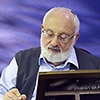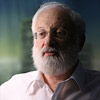Competitive Selection Of Spiritual Qualities
 The Zohar, Chapter “Otiot de Rav Hamnuna Saba (The Letters of Rav Hamnuna Saba),” Item 31: This is the playing of the Creator with each of the twenty-two letters, by giving each room to show her governance according to His wish until they sort out by themselves—out of their own desire—which of them is worthy of leading the world. This is why it was said that 2,000 years before He created the world, the Creator was looking and playing with them.
The Zohar, Chapter “Otiot de Rav Hamnuna Saba (The Letters of Rav Hamnuna Saba),” Item 31: This is the playing of the Creator with each of the twenty-two letters, by giving each room to show her governance according to His wish until they sort out by themselves—out of their own desire—which of them is worthy of leading the world. This is why it was said that 2,000 years before He created the world, the Creator was looking and playing with them.
The Light created the Kelim upon four phases of expansion. Then a restriction took place whereby a screen was established and Malchut decided to receive pleasure only for the sake of bestowal. That is how she interacts with the Light, the Creator, becoming similar to Him according to the law of equivalence of form.
Malchut wants to adopt the quality of Bina and in the process of doing this work, 22 forms of the desire for pleasure form inside her. It’s as if this quality is outlined and comes through by these contours, which accumulate to the degree that Malchut connects to Bina.
Initially the desire is formless like clay, but when it takes on the 22 forms of Bina, together they cause the desire to be similar to the Creator. So which of these forms is worthy of being the foundation by which the world is created? Which of them connects the beginning and end of creation? Which leads all the other forms after her? This is talking about the key intention, the main action, the calculation for making a striking interaction (Zivug de Hakaa) which is always done in the head of a Partzuf.
Following the reverse order, meaning from the side of the Kelim, all the letters appear before the Creator, or in other words, they raise MAN, a request. In reponse each of them receives MAD, an answer, telling it whether it is possible to create the world with it or not.
If no impurity latches on to the answer, it means that this is that very form. If, however, in response to the request from Above a force comes, but next to it Klipa awakens as well, then the world cannot be created using that form.
From the 1st part of the Daily Kabbalah Lesson 12/15/10, The Zohar
Related Material:
Just Like On An Oscillograph Screen
Place Of Residence: The Group
The Guide To Life


 A question I received:
A question I received: A question I received:
A question I received: Two questions I received on studying Kabbalah in Hebrew:
Two questions I received on studying Kabbalah in Hebrew: 





